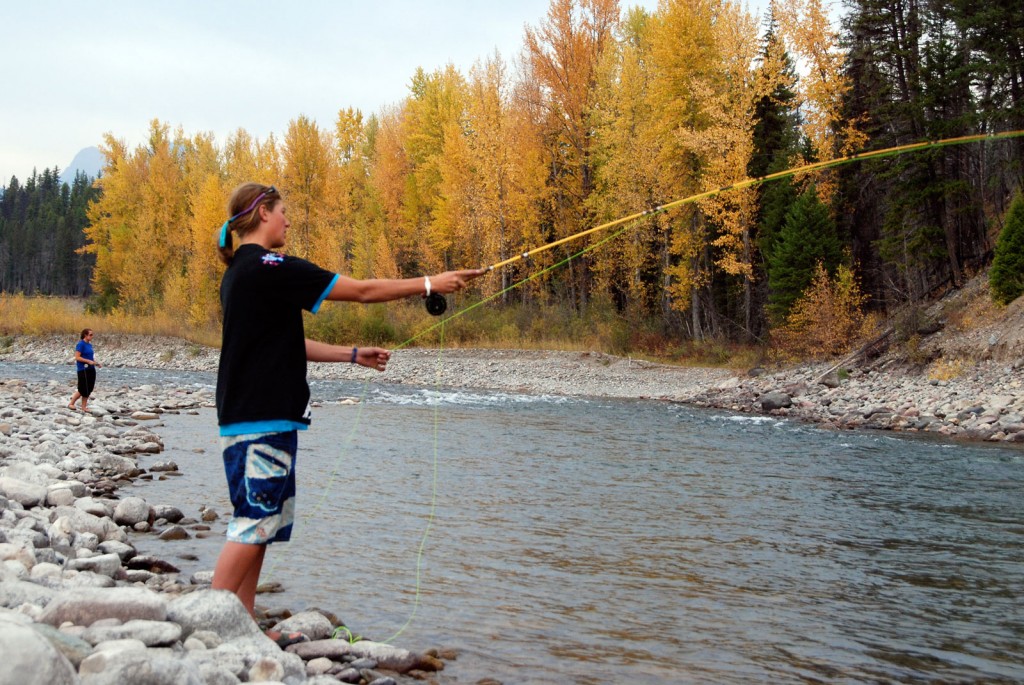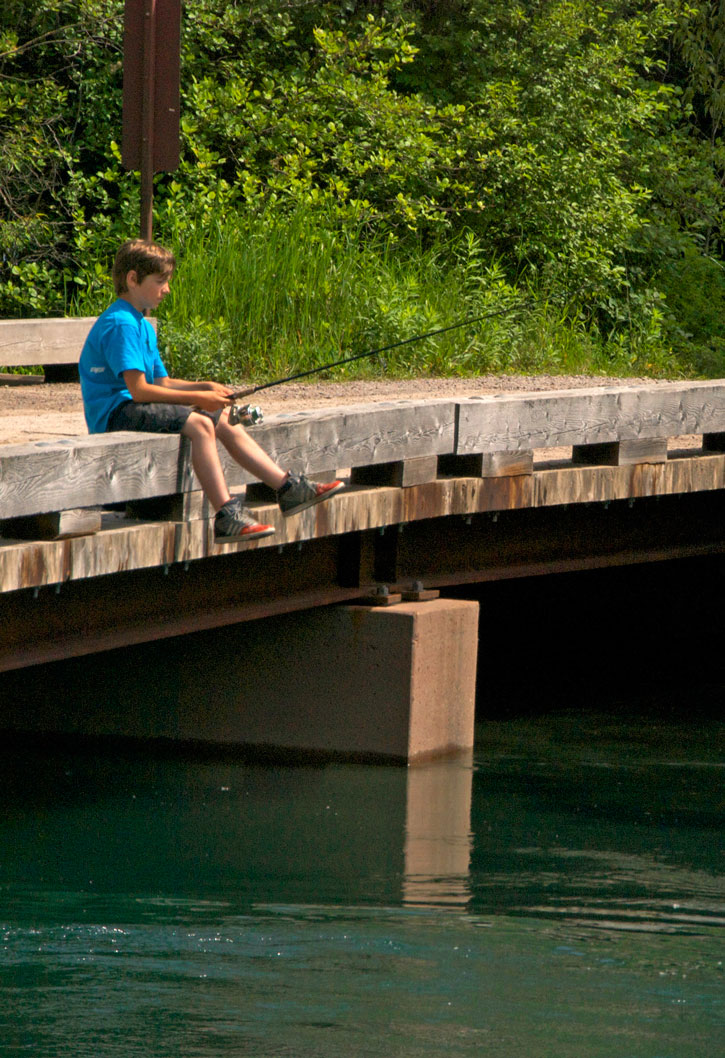
The North Fork of Flathead River attracts anglers looking for trout. Photo © Becky Lomax.
With 27,023 acres of lakes, 563 streams, and 22 species of fish, Glacier is a place where no angler should sit with a slack line. Only a scant 10 percent of park visitors fish, so those who do typically enjoy calm vistas and a few native trout. While weather and skill variables influence success, a few tips for Glacier’s waters can help.
Bears pose special considerations. Since smells attract bears that travel waterways, lessen your bear encounter chances by keeping fishy scents away from clothing. Catch-and-release fishing minimizes attracting bears.
For cleaning fish in the front country, dispose of the entrails in bear-resistant garbage cans. In the backcountry, do not bury or burn the innards, as that may attract bears. Instead, go at least 200 feet away from a campsite or trail, puncture the air bladder, and throw the entrails into deep water. Keep only what you can eat, and eat it as soon as you can.
Glacier Park’s fishing regulations enforce protection of native species through selected area closures and limits on taking native species. The park service no longer stocks fish, as many of the introduced species took a toll on native fish through competition for food and predation. Until 1972, an estimated 45-55 million fish and eggs were planted in Glacier’s waters, introducing arctic grayling, rainbow trout, kokanee salmon, brook trout, and Yellowstone cutthroat trout. Lake trout and lake whitefish also invaded the park’s west-side water systems through stocking in Flathead Lake.

Only a scant 10 percent of park visitors fish, so those who do typically enjoy calm vistas and a few native trout. Photo © Becky Lomax.
Of Glacier’s 10 sport fish and 12 nonsport fish, the bull trout is listed as a threatened species under the Endangered Species Act. In Montana, this predatory fish, which can grow to two feet long, now inhabits less than half of its original streams due to a number of factors, including habitat degradation. No fishing for bull trout is allowed; immediately release any that are caught incidentally. Look on the dorsal fin: no black, put it back.
Glacier is also one of the few remaining strongholds for westslope cutthroat trout, which now inhabit only 2.5 percent of their original range. Threatened by interbreeding with rainbow trout, genetically pure populations of cutthroat remain in 15-19 park lakes. Conscientious anglers release them after catching them.
While the law protects bull trout, anglers need to help preserve the park’s native fishery. Learn to identify native and nonnative species. Follow park guidelines for harvesting or releasing fish. In general, release native fish; keep only your limit of nonnative species.
For the best fishing recommendations, grab a copy of Russ Schneider’s Fishing Glacier National Park.
Excerpted from the Fifth Edition of Moon Glacier National Park.